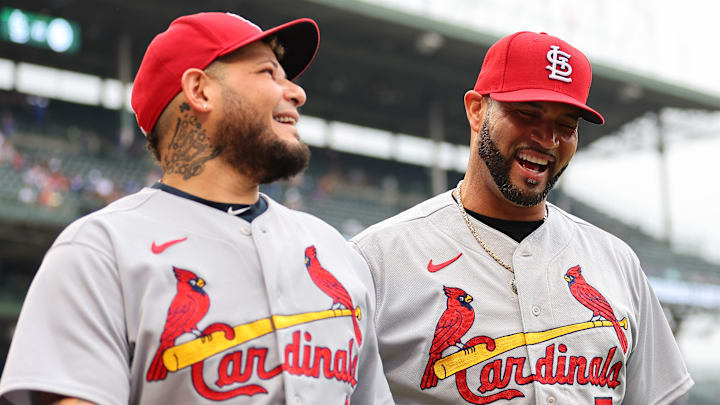2012: Yadier Molina (7.2)
With Albert now in Anaheim, the door opened for a new player to become the face of the franchise, and here he is. It’s not surprising for fellow Hall of Famer Yadier Molina to join his counterpart on this list, but it is shocking that the 9-time Gold Glover is only on this list once.
It’s hard to believe that the beloved St. Louis catcher has only once led the Cardinals in bWAR during his 19-year career, but somehow it’s true. How is this possible? Well, bWAR undervalues the catcher position. If we look at fWAR, Molina actually led the team from 2011-2013.
2012 was by far Molina's best season offensively, posting a slash line of .315/.373/.501/.874, while clubbing a career-high 22 home runs. After notching his second consecutive platinum glove with spectacular defense behind the plate, he finished 4th in MVP voting, cementing himself as the new face of the Cardinals. The transition from Pujols was short-lived, and the Cards’ success continued.
2013: Matt Carpenter (6.6)
Let’s look at another key player in the Cards’ success in the early 2010s: Matt Carpenter had his breakout season in 2013. As the newfound Cardinals’ leadoff hitter, Carpenter did not disappoint. With elite plate discipline and hitting tools, Carpenter led the Majors in runs scored, hits, and doubles.
After notching his first All-Star selection and Silver Slugger award, Carpenter was a key part of the Cards’ 2013 pennant run. It’s no wonder the future Cardinals Hall of Famer is on this list, as his productivity would continue for many years to come.
